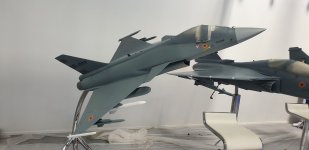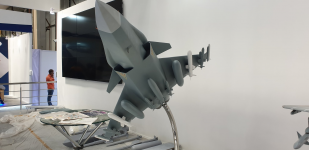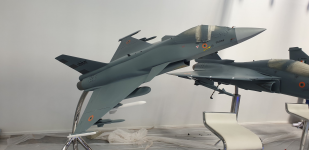May be this is how they take care of RCS :A
And what about air intakes which can't hide engine fan from front?
RCS Reduction in various sectors of the forward hemisphere is achieved by using S-shaped air intake duct and the coating of radar absorbing materials. But if you look closely to those images available in the public domain, diagrams and photographs, it can be concluded that the inlet guide motor vehicle (GMV), or more simply - the first stage of the compressor to blades, it seems to be very clearly visible to enemy radar.
S-shaped channel provides only reduction of RCS in the axial directions to reduce the visibility of other sectors in the forward hemisphere, engineers in Sukhoi applied shielding to the GMV. (Something which people seem to be unaware about)
In the intake passage their is set special device, partially overlapping in the axial direction of the GMV preventing electromagnetic waves. In addition to screening, this constructive solution separates inlet channel into several different cylindrical or planar voids, and, flat surface of the cavities can be both parallel and intersecting. Such a complex segmentation and channel air intake cover wall segments with radar absorbing materials to reduce the power of the electromagnetic waves reflected from the GMV and from wall cavities, thus providing a decrease of the RCS in the forward hemisphere of the aircraft.
In all likelihood, the screen, installed in the intake passage, is a structure of fine-meshed nets, whose linear size of the cell is less than a quarter of the electromagnetic wavelength, irradiating plane. Thus fine-meshed net performs the role of screen for electromagnetic waves from a radar and reduces the entire aircraft’s frontal RCS.
Western analysts who dubbed PAK-FA less stealthy than F-22 and F-35 from frontal RCS aspects did not consider this fact or rather they may do not even have knowledge of this. It is imperative that PAK-FA’s RCS should be recalculated / reassessed by them.
Above is the excerpt from below link :

Sukhoi Su-57 - The Anti-Stealth Game Changer.
Sukhoi PAK-FA abbreviated in Russian language as Prospective Airborne Complex of Front line Aviation is a program to develop fifth generation fighter aircraft. The prototype aircraft designated as T...
fullafterburner.weebly.com

















